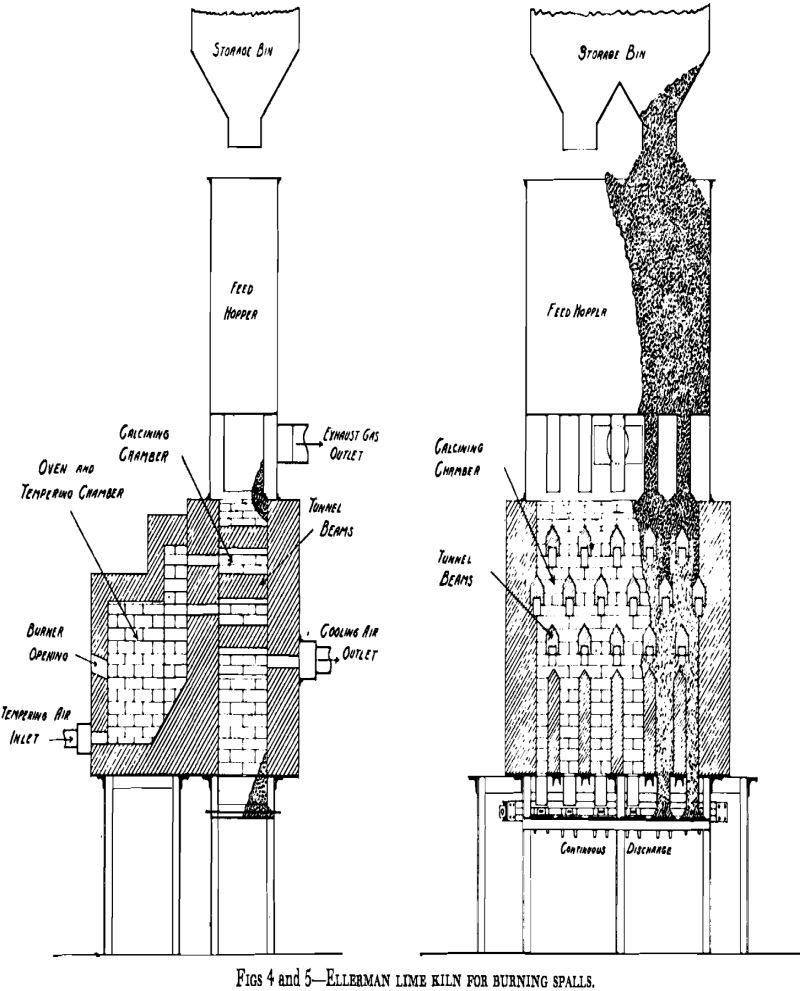Cement Grinding Plant Design

Grinding is a large and costly part of Portland cement manufacture. Prior to clinkering in the rotary kiln, raw materials are ground to a fineness of 80 to 90 pct passing 200 mesh. Then, after burning and cooling, the resulting clinker is ground to about 92 pct passing 325 mesh. Open Circuit Clinker Grinding: Many […]
Phosphate Rock

Apatite, the most abundant crystalline phosphate mineral, is found in igneous rocks and probably is the primary origin of all other phosphates, whether mineral or organic. Its chemical formula may be expressed as Ca5(Cl,F) (PO4)3. The chlorine may be replaced almost entirely by the fluorine. It is found in large or small hexagonal prisms, usually […]
Nitrates and Nitrogenous Compounds

Chemical nitrogen and the “nitrates” of commercial significance are derived mainly from three basic sources: (1) the natural deposits in the form of nitrate-bearing earth and clay, which, being largely water-soluble, can exist only in the most arid portions of the earth; (2) coal, which yields not only nitrogen but also the additional by-product hydrogen […]
Solvent Flooding

One-third to one-half of the original oil is left in most reservoirs even after thorough gas driving or waterflooding. In contrast, essentially all of the oil contacted can be recovered by flooding with a solvent (a fluid miscible with the reservoir oil). It is not economical to fill a reservoir with solvent since the value […]
Monazite

Monazite formerly was described as moribund, but, in the light of recent developments, it is no longer so. It is the common source of the rare earths and thorium, both of which are becoming progressively important in industrial and other applications. Moreover, by the action of foreign governments, the sources on which the United States […]
Mineral Fillers

Powdered nonmetallic minerals and rocks of many different types are used extensively in industry for incorporation in compositions and manufactured products The term “mineral filler” is commonly employed to designate a material that is used for a specific purpose but not as an essential or reactive component Such a definition is not without objections, and […]
Lime – Quicklime & Limestone

Lime is a very general term applied to products of limestone, in popular treatises often incorrectly, including ground or pulverized limestone used in agriculture. When used without qualifying adjective, the term usually means burned or calcined limestone, or quicklime, or calcia. Limestone is burned (roasted or calcined) in furnaces known as lime kilns by direct […]
Diatomite – Diatomaceous earth

Diatomite is a hydrous or opaline form of silica, commonly known as diatomaceous earth, diatomaceous silica or kieselguhr. The term “infusorial earth” has lost its original meaning and today is incorrect in view of the distinctions between diatoms and infusoria. Various locality and variety names are obsolete but some retain local significance. Moler and Celite […]
Stone Crushing

The use of stone as a building material in relatively large blocks is recorded in ancient historical records but only within the past 200 years has broken stone in small sizes begun to have extensive use, principally in highway-construction. Tresaguet, in 1764, describing his method for highway construction in France, required the top surface to […]
Clay

The term “clay” is applied usually to certain earthy rocks whose most prominent property is that of plasticity when wet. This permits them to be molded into almost any shape, which they retain when dry. Furthermore, they harden under fire. Clays contain hydrous aluminum silicates—the clay minerals—in appreciable amounts, but aside from this a number […]
